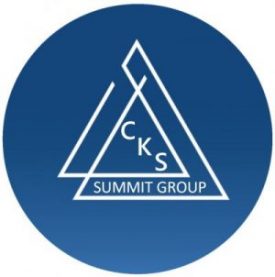Higher life expectancies mean longer retirements. You may need sufficient resources to fund the lifestyle you want for 20 or more years after you stop working. What’s your retirement plan for living longer? Here’s how to factor in longevity into your retirement plan.
Retirement planning hasn’t changed all that much over the years. You work, you save and then you retire. While the mechanics may be the same, today’s savers are facing some challenges that previous generations didn’t have to worry about.
Americans today live longer than previous generations, and that added longevity is putting stress on traditional retirement plans and financial strategies. On average, men and women who reach the standard retirement age of 65 can anticipate living into their eighties, according to the Social Security Administration.
How can you have the retirement you’ve always wanted? Retirees want to experience all the things they didn’t have time to do when they were too busy working. Exotic travel vacations and spending more time with friends and family are just some of the many possibilities that are almost endless. From budgeting and setting the right goals to choosing the right retirement savings account, CKS Summit Group will help you map out a longevity plan that’s right for you.
Here are 4 tips on planning for a long retirement.

One of the hardest parts about retirement is feeling overwhelmed with the process. Thankfully, planning for retirement doesn’t have to be burdensome, but you will need a road map to keep you on track. The first place to start is to think about what your life might look like in retirement. Sit down with a pen and paper and write down your retirement goals.
Then think about how much everything will cost. With the current rate of inflation, we don’t know exactly what prices will be like in the future. You’ll also want to factor in your day-to-day expenses, like housing costs, food and health care. Remember, some of the costly expenses you have now, such as a mortgage or childcare costs, may no longer exist, which could result in a decrease in your overall expenses as you near retirement.
Next, add up all the income you might receive in your post-working years. Factor in pension income if you have one, social security payments and any other dollars, such as rental income from a property, that may come your way. Match up revenue and expenses and you’ll get a good idea of what you’ll need to set aside for every year of your retirement.

This is your current budget, which takes into account all of your present-day income and expenses. While you should have some idea as to what you’ll need to save per month based on your retirement goals, you also need to make sure that you have that money to save. It’s a good idea to put retirement savings as a line item in your budget, just like food and shelter costs, so that you can set aside those funds every month.


One of the best ways to retire wealthy is to start saving money as soon as you start earning it. Thanks to the power of compound interest, even small monthly contributions to a retirement account can grow over time to a sizable nest egg. The more time you have, the more your money will grow.
Having a separate emergency account — usually with about three to six months of salary saved up — will allow you to cover any unexpected costs without throwing your retirement plans out of whack. Here are a couple of accounts you can look into depending on your saving methods:
- High-yield savings account – It’s risk-free money inside of a federally-insured savings account that does not get invested in stocks or bonds — but you’ll make next to nothing on the funds in the account. Currently, the highest-yielding savings accounts are under 1% on the dollars saved, and have been trending down with current Federal Reserve policy to keep its benchmark rate lower for longer. Your money should grow more over time in a more traditional investment savings vehicle.
- Traditional IRA Account – The IRA is a tax-advantaged investing tool for individuals to earmark their retirement savings. Depending on the individual’s employment status, IRAs can be of various types and have different tax liabilities. As the name suggests, it’s an individual account that you open and contribute to yourself. One of the benefits of the traditional IRA, as it’s called, is that contributions are, generally, tax-deductible. So, for example, if you contribute $6,000, your taxable income will decrease by the same amount.
- Roth IRA – Roth IRAs are different from traditional IRAs in two meaningful ways. The first is that contributions are made with after-tax dollars, which means you don’t get a tax deduction when you invest. The upside is that when it comes time to withdraw you will not owe the IRS a thing. All of your contributions can, therefore, grow tax-free over time. Like the IRA, you can only contribute $6,000 a year or $7,000 if you’re over 50. There is one caveat: if you earn more than $122,000 or if you and a spouse earn more than a combined $193,000, your annual contribution room will be reduced. If you earn more $137,000 individually or $203,000 as a couple, you cannot contribute to this account.


Not having consumer debt can make a big difference in your retirement plans — not only does it decrease the amount you’ll need to spend each month, but it can also make your savings stretch further. One goal for everyone should be to reach 65 debt-free. That includes credit card debt, any student and other big loans. The reason is simple: you don’t want to be going into your non-earning years owing money.
In a new study, wealthy retirees were the least likely to have credit card debt and auto loan debt, two common types of consumer debt. According to EBRI’s research, only one in five wealthy retirees had auto loan and credit card debt. Compared to the average retiree, that’s significantly less — in the average retiree category, about half had credit card debt, and about half had a car loan. If paying off credit card and auto loan debt sounds like the right move for you, start by considering how long you have before retirement.

A lot of people like investing on their own, but when it comes to retirement savings it’s a good idea to work with a financial advisor who has a certified financial planning designation. Here are a few things to look for in a good advisor:
- Services they provide: Do they specialize in retirement planning? Can they help you create a budget? Do they sell all kinds of securities?
- Track record: Ask to speak to references. You don’t need your advisor to provide stellar returns, but rather you want to make sure they’re attentive, understand your needs, can create solid plans and know how to help you invest.
- Communication: People tend to panic when the markets get bad and when their advisor doesn’t reach out to tell them to stay calm. Find out how often your advisor wants to meet and how they’ll be in touch. You don’t need to handhold, but you do want to meet with them at least a couple of times a year.
At CKS Summit Group, we design, build, and manage custom retirement portfolios that are fully capable of simultaneously generating stable growth, increasing income, and preservation of principal throughout a client’s lifetime, with only limited downside market risk. Here’s a look at some of the different portfolios we offer our clients:
- The CKS Lifetime Portfolio: The CKS Lifetime Income Portfolio is our trademark portfolio concept, designed to provide increasing income, stability, growth and preservation of principal throughout retirement. Bringing a high level of flexibility in order to accommodate our ever changing financial world.
- The CKS Strategic Insured Portfolio: The CKS Strategic Insured Portfolio is designed for individuals who wish to have absolutely no downside risk within their portfolio.
- The CKS SMART Portfolio: SMART is the Strategic Movement Around Retirement Taxation and its goal is to limit your post-retirement taxation – not your income. This highly advanced cutting edge strategy is specifically designed to increase retirement income while simultaneously increasing the amount of liquid income tax free cash flow. This would include those who have had disappointing stock market experiences in the past and are now seeking as much safety, predictability and guarantee as possible regarding their money.

Luckily, there’s still time to adjust how you save to plan effectively for these potential financial issues. Further options include taking advantage of catch-up provisions to maximize tax-advantaged savings options, saving more beyond retirement accounts, and yes – delaying retirement.
Let’s examine options now and take what steps are necessary to ensure a financially comfortable life in the growing number of later years. At CKS Summit Group, we will help you do the hard work of creating a retirement budget and setting milestones to reach financial goals.
Contact us here to set up your complimentary strategy session today.



